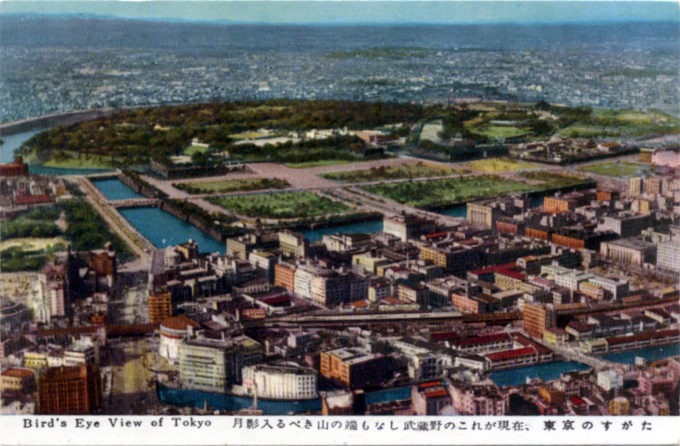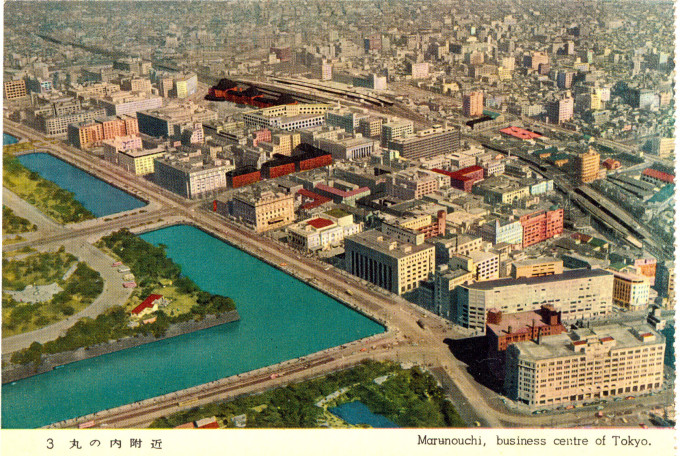
“Bird’s Eye View of Tokyo,” c. 1960. Looking northwest, across the Marunouchi business district and the Imperial Palace and palace plaza, toward pre-skyscraper-sub-city Shinjuku. The green area just to the right of upper-center is the Shinjuku Gyoen National Garden. At lower-left-center, near Yurakucho Station, stand the Nichigeki Theater, and the Asahi Shimbun Building.
See also:
The Creation of “Greater Tokyo”, 1932
Tokyo Self-government Commemoration, 1919
Marunouchi Business District, 1900-1950
“In October, 1932, Tokyo was enormously extended to include many adjoining towns and villages within the municipal area. And in July, 1943, Greater Tokyo absorbed the remaining part of Tokyo Prefecture in which it lay, expanding in area from 221.1 to 796.5 square miles. It was then renamed ‘Tokyo-to’ (Tokyo Metropolis).
“In World War II, the capital experienced repeated air raids; the heavy losses sustained are recorded as follows:
Deaths: 167,000* persons Displaced: 2,862,000 persons Burnt or damaged: 767,000 houses Stricken area: 34,310 acres * An estimated 100,000 deaths occurred during one firebombing, the raid of March 10-11, 1945. “Since the termination of the war, however, reconstruction has been rapidly proceeding; the debris has been cleared up, traffic facilities have now recovered to almost prewar levels, and about 80% of the houses have been rebuilt. As a result, Tokyo is now considered the largest city in the world, so far as population is concerned. Tokyo Metropolis has an aggregate population of 9.683,802 (Oct. 1960 census). About one-fourth of its total area on the S.E. side is called the ward area (old city limits) and is more densely populated than the newly include parts of the Metropolis.
“Tokyo is the center of national administration, education, and finance, and is also a most thriving industrial city. Connected with all other parts of the country by railways and airways, it is a convenient center for tourists.”
– Japan: The Official Guide, Japan Travel Bureau (JTB), 1962

Aerial view of the Marunouchi business district, c. 1960, with the reconstructed Tokyo Central Station at top-center colored in red. While much of the business district remained intact and undamaged, including the historic Londontown block at center, the area of the city to the upper-right, across the railroad tracks and Yurakucho Station, was completely burned out and leveled as the result of a May 1945 wartime firebombing of Tokyo, the third large raid to hit the capital in the final six months of the Pacific War.

